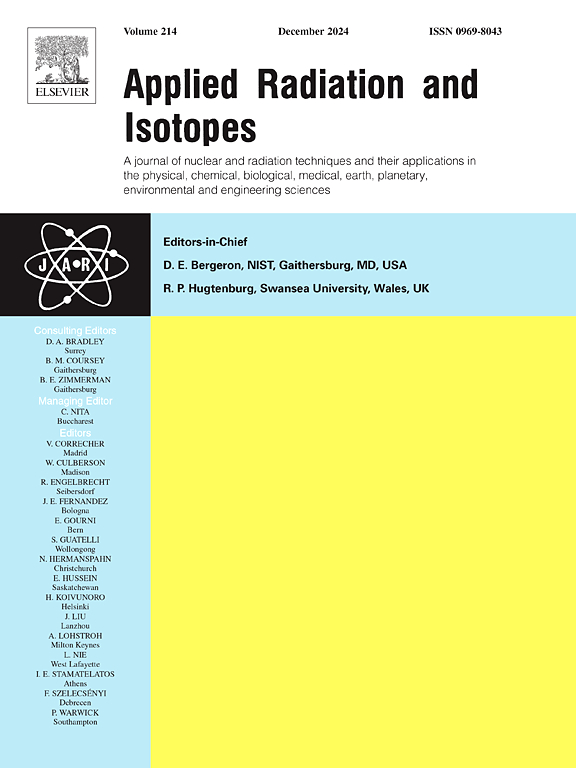Composite detectors as a beneficial tool for dose measurements of secondary radiation in boron neutron capture therapy
IF 1.6
3区 工程技术
Q3 CHEMISTRY, INORGANIC & NUCLEAR
引用次数: 0
Abstract
A concept for studying the effects of secondary radiation in boron neutron capture therapy based on the application of multilayer composite scintillators was proposed in this work. Such composite scintillators can be used for simultaneous measurement of the dose of various types of ionizing radiation, including 7Li ions, α-particles and γ-rays. For this purpose, three types of composite detectors based on the single crystalline films and single crystals of Y3Al5O12 and Lu3Al5O12 garnets, doped with Ce3+, Pr3+ and Sc3+ ions, were produced using the liquid phase epitaxy growth method. The scintillation reader for in-situ dose measurement of different radiation components at BNCT was constructed based on the developed types of composite detectors. The possibility of recording various radiation components was demonstrated using: 1) the differences in the pulse height spectra and scintillation decay kinetics of various parts of composite detectors under excitation by α-particles of 239Pu source; 2) the difference in the radioluminescence spectra of films and crystal scintillators in composite detectors under excitation by γ-rays of 192Ir (392 keV) source. The obtained results were discussed for choice of the best registration methods and types of composite detectors for direct dose measurements of secondary radiation under excitation with thermal neutrons.
求助全文
约1分钟内获得全文
求助全文
来源期刊

Applied Radiation and Isotopes
工程技术-核科学技术
CiteScore
3.00
自引率
12.50%
发文量
406
审稿时长
13.5 months
期刊介绍:
Applied Radiation and Isotopes provides a high quality medium for the publication of substantial, original and scientific and technological papers on the development and peaceful application of nuclear, radiation and radionuclide techniques in chemistry, physics, biochemistry, biology, medicine, security, engineering and in the earth, planetary and environmental sciences, all including dosimetry. Nuclear techniques are defined in the broadest sense and both experimental and theoretical papers are welcome. They include the development and use of α- and β-particles, X-rays and γ-rays, neutrons and other nuclear particles and radiations from all sources, including radionuclides, synchrotron sources, cyclotrons and reactors and from the natural environment.
The journal aims to publish papers with significance to an international audience, containing substantial novelty and scientific impact. The Editors reserve the rights to reject, with or without external review, papers that do not meet these criteria.
Papers dealing with radiation processing, i.e., where radiation is used to bring about a biological, chemical or physical change in a material, should be directed to our sister journal Radiation Physics and Chemistry.
 求助内容:
求助内容: 应助结果提醒方式:
应助结果提醒方式:


